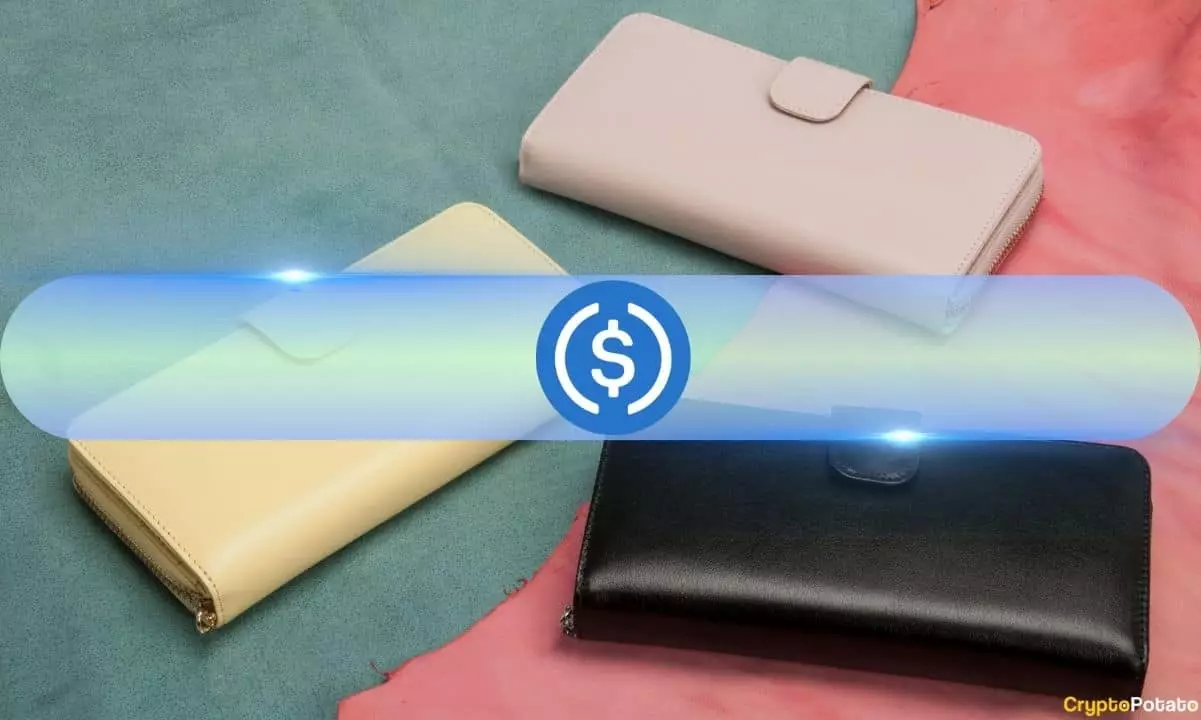The digital asset economy has experienced a significant downturn over the past year, with various factors contributing to its decline. Regulatory actions, financial insolvencies, increasing interest rates, and instances of fraud have all played a part in the shrinking landscape. Even the world’s second-largest stablecoin, USDC, has not been immune to these forces. This article aims to analyze the current state of USDC and its potential for growth despite the challenges it has faced.
One of the noticeable effects of the overall decline in the digital asset economy is the decrease in USDC’s circulating supply. Starting at approximately $45 billion, the total circulating supply has now dropped to approximately $25 billion by the end of November 2023. The rise in interest rates in conventional markets has impacted USDC holders, as they do not accrue interest on their holdings. This elevates the opportunity costs associated with holding USDC and has likely contributed to the decline in its circulation.
Despite the challenges faced, USDC has seen a growth of 59% in the number of wallets with a balance of at least $10 over the past year alone. This surge in wallets indicates a growing interest in USDC and its potential as a stablecoin. With over 2.7 million wallets holding USDC, it is clear that there is still confidence in the stability and utility of this digital asset.
In a report titled “State of the USDC Economy,” Circle, the issuer of USDC, revealed that their stablecoin has been used to settle an impressive $12 trillion in blockchain transactions since its introduction in 2018. This demonstrates the widespread adoption and utilization of USDC within the digital asset economy. Additionally, Circle facilitated over $197 billion in transfers between the traditional banking system and blockchain networks in 2023, further solidifying the role of USDC in bridging the gap between these two financial realms.
Despite the setbacks faced by USDC, such as the banking crisis, the stablecoin has managed to conduct a staggering 595 million transactions from January through November 2023. This showcases the resilience and durability of USDC in the face of adversity. It is a testament to the trust placed in USDC by its users and the demand for a stable and reliable digital asset in the ever-evolving financial landscape.
Circle’s Cross-Chain Transfer Protocol (CCTP), introduced in April 2023, has already made a significant impact by conducting 66,500 transactions. This protocol has been designed to reduce friction, improve safety and security, and ultimately lower costs when transferring USDC across different blockchains. Its successful implementation further solidifies USDC’s position as a leader in facilitating seamless and efficient blockchain transactions.
Jeremy Allaire, the Co-founder and CEO of Circle, expressed optimism for the future of USDC. He stated, “While we are still in the early stages of this mission, this year’s State of the USDC Economy Report details a set of unequivocal indicators for growing momentum.” Allaire believes that as regulatory clarity for stablecoins continues to emerge and various institutions adopt this technology, USDC will play a central role in the new era of the internet financial system. This vision highlights the potential for USDC to become a key player in the digital asset economy in the years to come.
Despite its potential for growth, USDC has not been without its challenges. One significant factor that led to the decline in USDC’s circulation was the de-pegging of the stablecoin following the failure of Silicon Valley Bank (SVB). Circle, the issuer of USDC, had a substantial portion of its reserves tied up with SVB and lost access to many of its other banking partners. The failure of SVB posed a threat to the stability of USDC. However, USDC managed to restore its peg following the Federal Reserve’s intervention to compensate depositors affected by the failures of several banks.
The entity behind USDC recently submitted confidential paperwork for an initial public offering (IPO) in the United States. This move aims to make USDC a publicly traded company, further establishing its presence in the financial market. However, the IPO is subject to the review process by the Securities and Exchange Commission (SEC) and market conditions. If successful, this IPO could mark a significant milestone for USDC and solidify its position as a leading stablecoin in the digital asset economy.
Despite the challenges posed by regulatory actions, financial insolvencies, and increasing interest rates, USDC remains a prominent player in the digital asset economy. The decrease in circulating supply is countered by the growing number of wallets and impressive transaction statistics. The introduction of the Cross-Chain Transfer Protocol and the vision for the future demonstrate the potential for USDC’s continued success. As it braves the path towards an IPO, USDC is poised to make a lasting impact in shaping the new financial landscape powered by blockchain technology.



Leave a Reply